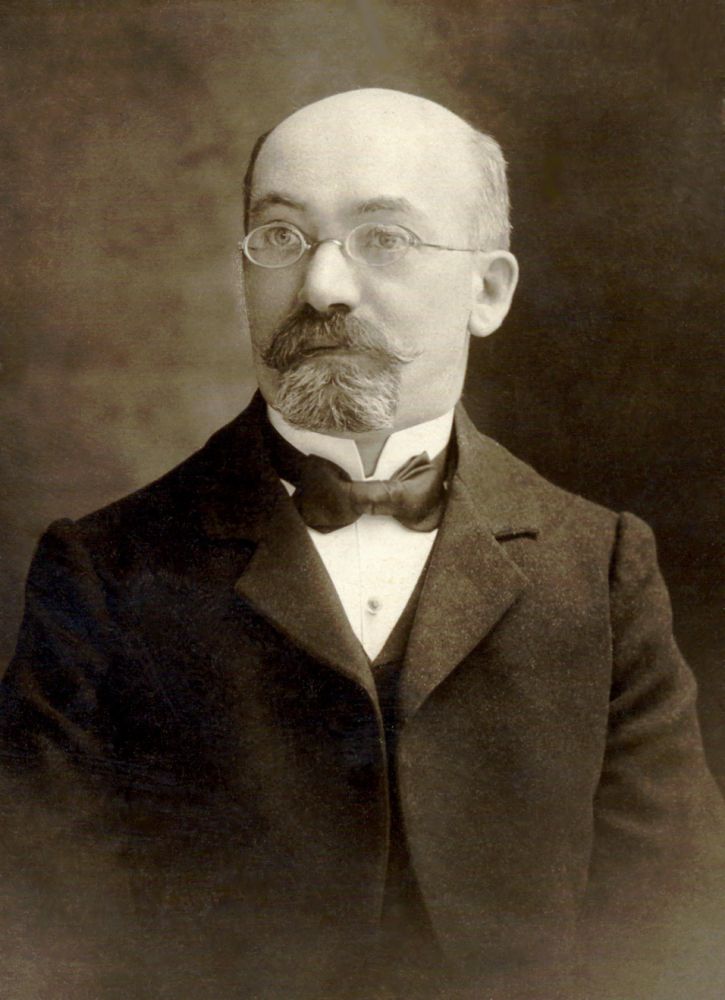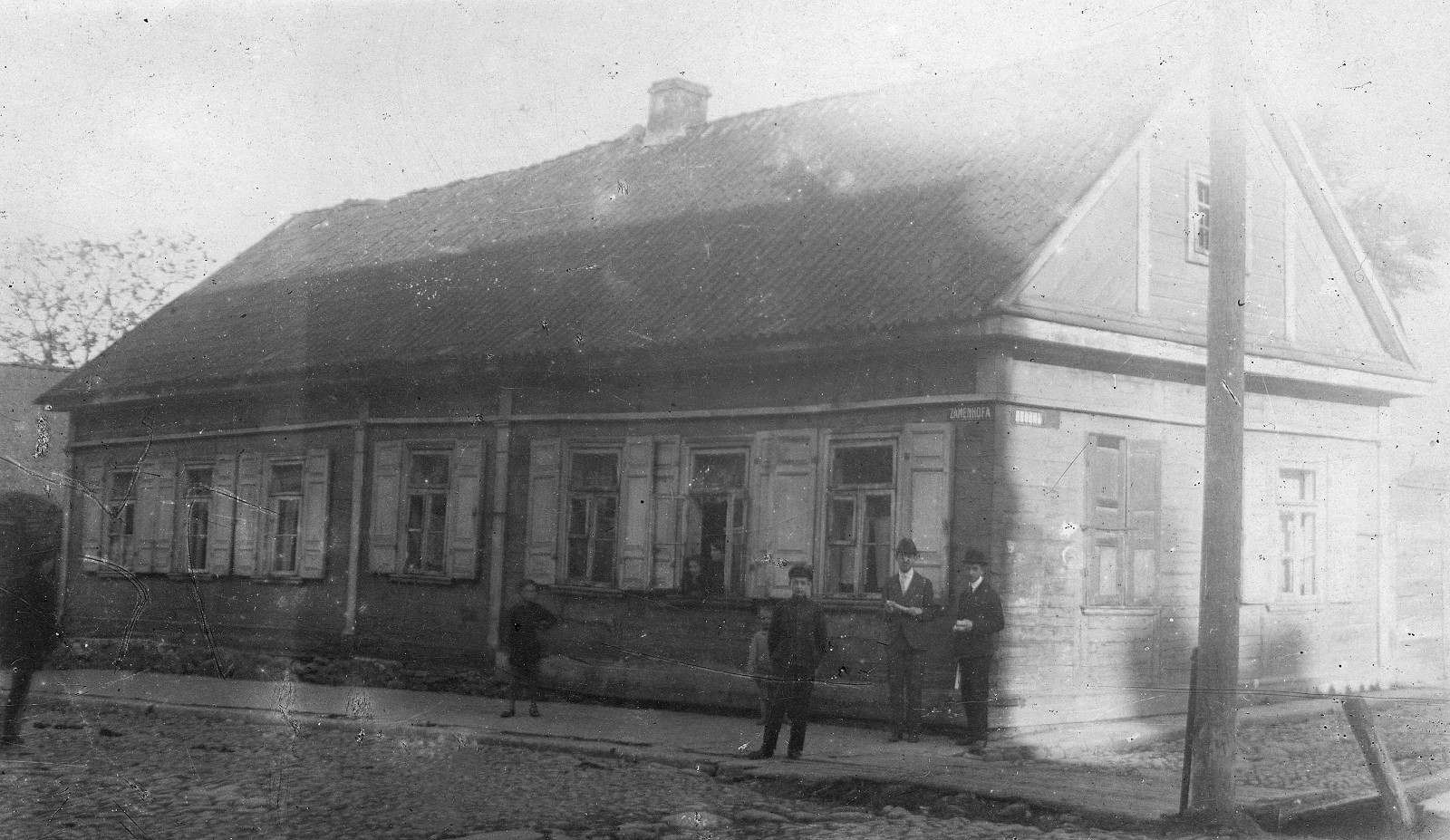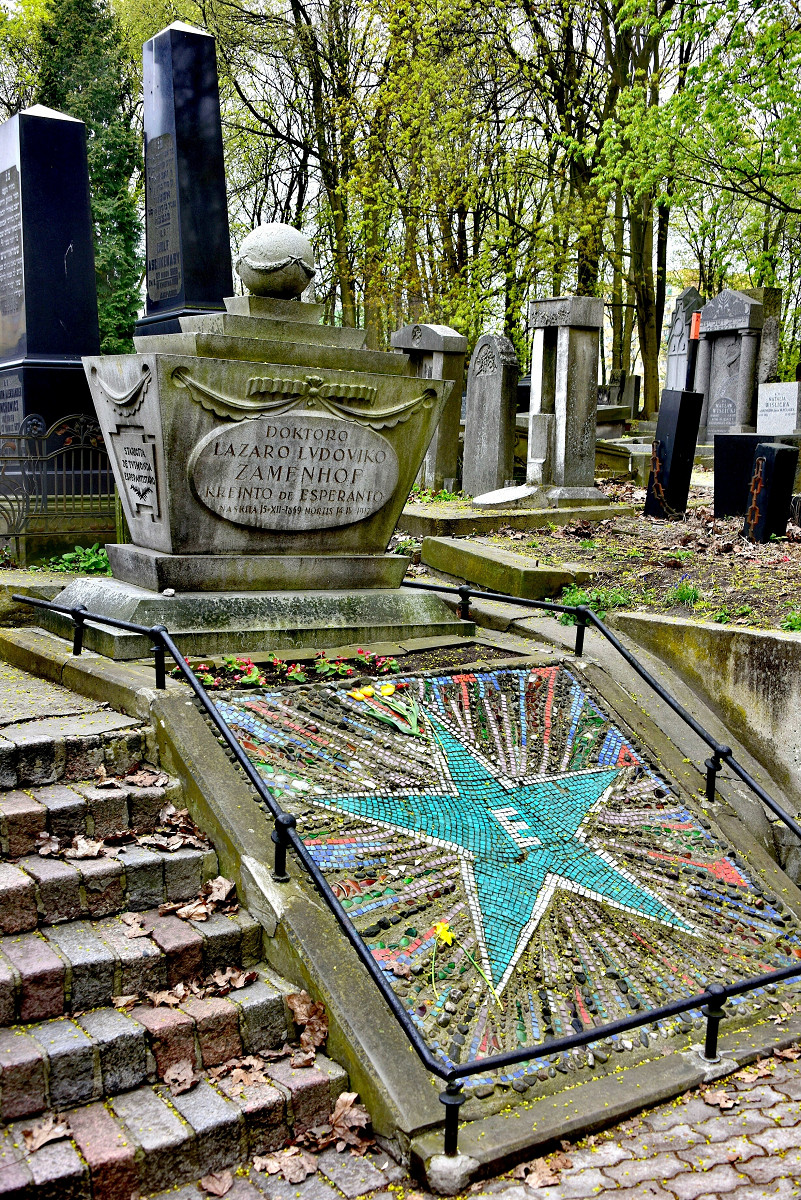- News
- Events
- Oneg Shabbat
- Collections
- Research
- Exhibitions
- Education
- Publishing Department
- Genealogy
- About the Institute
- Bookstore


Ludwik Zamenhof was born on 15 December 1859 in Białystok (Russian Empire territory), in a house at 6 Zielona street (currently Zamenhofa), on the corner of Biała street, as a son of Markus and Rozalia nee Sofer. He had ten siblings. At home, the family spoke primarily Yiddish, but also Russian and Polish. At the age of 10, he wrote a theatrical play – The Tower of Babel, or a Białystok tragedy in five acts, because he believed that the main reason of conflicts between people is the language barrier. He sought a solution for it in developing one common language.

After finishing his education at the cheder, at the age of 13 he enrolled into gymnasium. Between 1879 and 1881, he studied medicine in Moscow, and later in Warsaw (until 1885). his area of expertise was ophthalmology, in which he completed a degree in Vienna in 1886. after his studies, he worked as an ophthalmologist in Warsaw.
Languages had remained his greatest passion since the early age. In 1887, after much effort, Ludwik Zamenhof was finally able to publish a book called „International language”, in which he presented a project for a new language. He published it under a pseudonym Doktoro Esperanto, which when translated literally means „Doctor Bearing Hope”.
The difference in languages, wrote Zamenhof explaining the reason for the creation of his work, is a basis of differences and mutual hatred of nations as the language is the first thing noticed when meeting people: not being able to communicate, we shun each other. Esperanto was supposed to become a shared worldview basis for people of different cultures and religions. A universal basis because technically, everyone was supposed to be able to learn the language in a few weeks; it was also neutral as it was not associated with any nation.
Zamenhof was afraid that the publication of „International language” may have negative consequences in terms of his practice. I knew what kind of fate befalls a doctor dependant on his public when he is considered a dreamer or a man taking care of secondary things. I was risking my future peace of mind and a living, both mine and my family’s, but I could not give up on this idea which conjured up in my mind and my blood — I have crossed the Rubicon.
The new, universal language, was named Esperanto from the pseudonym of its creator; it found supporters around the world. Esperanto associations were being founded in Europe and the USA, Esperanto literature was being written and many translations into that language, press in Esperanto was being published, including a magazine for blind Esperantists. Beginning with the first international congress of Esperantists which took place in 1905 in Boulogne-sur-Mer, they were organized every year. Even though Zamenhof had renounced any copyright on Esperanto, he achieved — on the contrary to his fears — financial stability which allowed him to publish in Esperanto press around the world. As a result, Doktoro Esperanto could fully devote his life to popularization of the language invented by him.
In many comments made by Ludwik Zamenhof reoccurs a statement that he came up with the idea of an universal language while as a young boy he was observing disputes between neighbours which was very common for multiethnic Białystok. Zamenhof, coming from a Russified family, observed it from a specific perspective of „a devoted son of his nation”. What this declaration meant to him, he explained in an interview published in 1907 in the British press: „I can tell you that I acted mainly in interest of my fellow believers when I was inventing this language. I saw them cut off from the world because of the language they spoke only between themselves and in a churlish manner. I saw them locked up in a ghetto and as a result they were exposed to the terrible curse of ethnic hatred, and the walls of the ghetto were mainly made of jargon.” Esperanto was supposed to destroy these walls. On the other hand, Zamenhof would try avoiding such declarations, fearing that the great idea of an universal language might be considered to be merely an attempt to reduce stigma of „a stranger” made by the persecuted minority. He did no completely succeed in it. Twenty years after the death of the creator of the international language, Adolf Hitler regarded Esperanto as „a Jewish language” and began persecuting its users..
Zamenhof’s concepts of ideological universalism did not end with an attempt to break language barriers. At the beginning of the 20th century, he issued a concept of Hillelism, which essence was to reform Judaism and shape of Jewish identity in such a way that would diminish customary and mental differences between the Jews and other European societies. Some time later, he modified his concept making it broader and as a result including all nations and religious groups. Homaranism — that’s what he called his new project — was an attempt to create a supranational and supra-religious community that would not invalidate current identities and beliefs of its members. Both concepts, however, did not evoke much sympathy among the public opinion, even the majority of the Esperantists. Zamenhof also never managed to remove the contraries between them.

Doktor Ludwik Zamenhof died of a heart failure on 14 April 1917 in Warsaw. He was buried in Okopowa Jewish Cemetery. His dashing concept, which was born as an objection to Białystok’s stigma of the Tower of Babel, outlived its inventor. Around the world there are still groups of people learning this artificial, neutral and universal international language, Esperanto.
------------------------------------------
The text was based on excerpts from an article by Cyryl Skibiński: Idea, która przeżyła twórcę — wspomnienie o Ludwiku Zamenhofie.